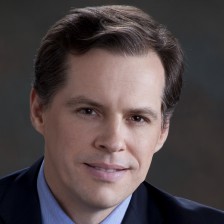German Election
Election day, September 24th, is rapidly approaching. The polls and betting markets are fairly stable and clearly indicate that Merkel will win her fourth term. Social Media Influence (SMI) indicates this will likely be the case, but SMI ratings have been shifting unexpectedly – hence the reason for this update.
Unlike in US, German campaigning is fairly limited. Whereas in the US, and in many other democracies, important elections are actively covered a year or more before election day, in Germany the real campaign season only begins six weeks before election day. Before this brief window, parties and candidates obviously begin to position themselves and implement election strategies, but things like public election posters and candidate debates are not permitted. It is during this last six week stretch that much of the actual campaign occurs.
Merkel has chosen to be somewhat restrained, at least to date, during this campaign season. She has been playing it rather defensively – not attacking to any great extent while avoiding confrontation and major controversial issues. Even in her only televised campaign debate against her leading rival, Schulz, her persona was one of defense. In polls and betting markets, her strategy has worked in that they continue to show her ahead. The betting markets show her slightly better after the debate, but at over 90% before the debate any improvement seems superfluous, while polls have both candidates roughly remaining stable.
SMI tells a slightly different story.
Before the start of the campaign season, the FDP was the party singled out as the strongest performer in SMI terms in that it projected stronger actual influence than polls. The remaining principal parties, according to SMI, were either underperforming or approximately in-line with forecasts from polls.
Since campaigning began, the most significant move has been a deterioration of the CDU’s SMI, which was partially expected. Its SMI had reached exceptionally high levels in May during the G20 Summit (which not only took place in Germany but also highlighted Merkel as a major global leader) and a reversion to the mean (in other words a decline) would be the norm. The downtrend had already begun before the beginning of the campaign season, so in some ways it might not be that surprising that it has continued. However, it is worrying that it has yet to stabilize even after she clearly won the TV debate against Schulz. This is a warning sign for potential underperformance of the CDU going into election-day.
The beneficiaries so far have been the FDP and AfD, parties that lean further right on the main election topics. The FDP is akin to a ‘Libertarian’ party in that it is socially liberal and fiscally conservative, but for the main issues of this election it is leaning further right. The other party is the AfD which is described by many as the far-right nationalist party, though it appears to be trying to shed that image.
These parties appear to be taking advantage of Merkel’s rather bland defense of conservative policies. In fact, Merkel’s election strategy seems to be stopping any leakage to left-leaning parties by agreeing with some of their points. This clearly occurred during the TV debate where Merkel ended up agreeing with Schulz on issues ranging from retirement age to foreign policy. It seems like she only sees a real threat from the left.
Interestingly, SMI ratings of the FDP and AfD have improved during the election campaign whereas left-leaning parties have remained mostly stable. This more or less confirms the thesis of Merkel attempting to stop leakage to the left at the expense of leakage to the right.
The last 10 days of the campaign could still change these trends, but as of right now it looks like:
- Merkel’s CDU will prevail but with less of a commanding lead than most assume,
- FDP will come in a strong third place and be the party to most outperform its poll figures,
- AfD will slightly outperform,
- Left-leaning parties look to disappoint,
- Greens are at the largest risk of falling under the 5% minimum and, of the four smaller parties, will underperform the most.
These are not terribly different from the SMI forecasts made in August. The biggest change is the strengthening of the right of center-right parties and the marginal weakening of the CDU.
As for the next ruling coalition, we will have to see how deep CDU’s declining SMI trend takes it. Previously, SMIs showed that the CDU and FDP would be able to produce a ruling coalition without a third party. Now, however, such a coalition might need the addition of the Green Party. The other right-leaning party, AfD, is not seen as a viable coalition partner. This scenario could complicate matters significantly if there are any disagreements during coalition talks which would likely result in the reversion to the rather boring but stable ‘Grand Coalition’ of the CDU and SPD.
